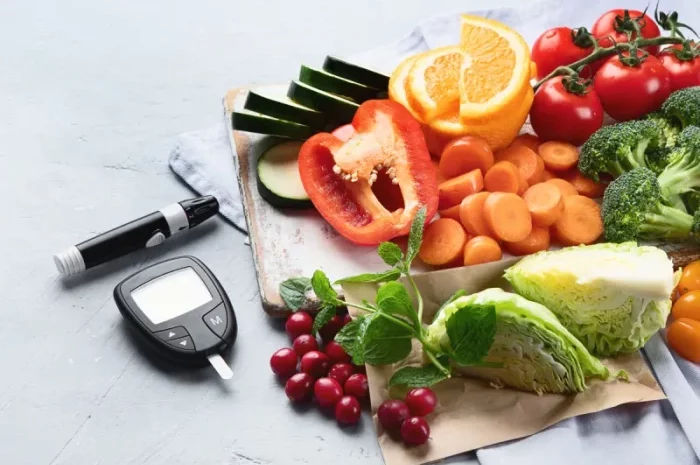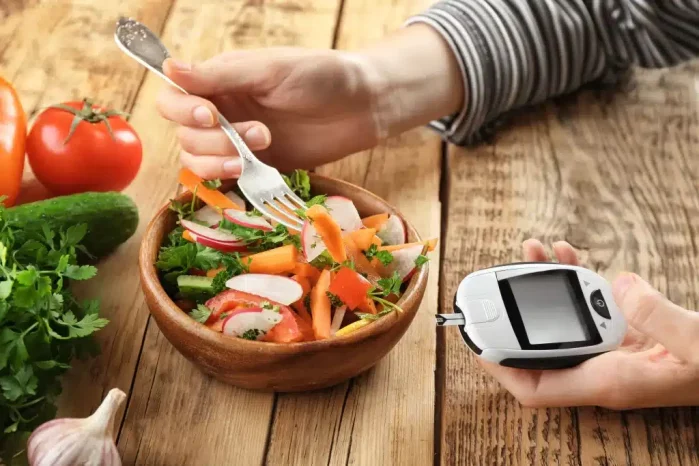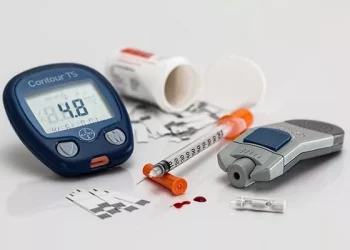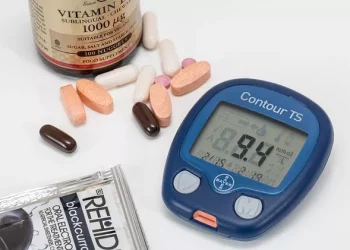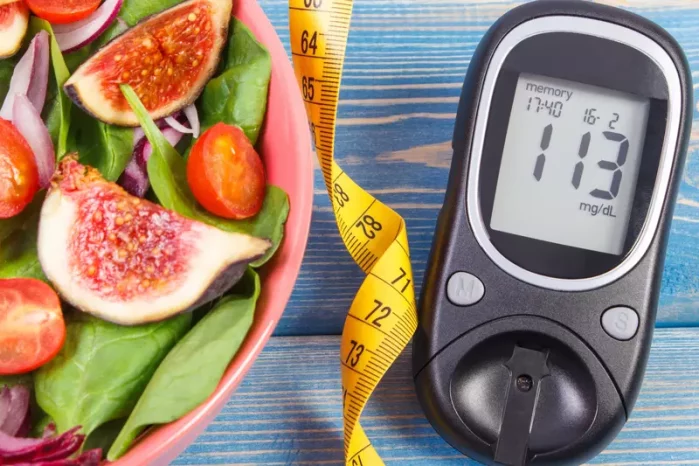Managing blood sugar levels is a fundamental aspect of diabetes care, and diet plays a crucial role in achieving stable glucose levels. Whether you have diabetes or are simply looking to support your body’s natural ability to regulate blood sugar, the foods you eat can make a significant difference. Certain foods are particularly effective at lowering blood sugar levels, and incorporating these into your daily meals can help prevent spikes in glucose, reduce the risk of complications, and improve overall health.
This comprehensive guide will explore the various foods that can help lower blood sugar, with an emphasis on their benefits, how they work to regulate glucose, and practical tips for including them in your diet.
Understanding the Impact of Food on Blood Sugar
To understand how specific foods help lower blood sugar, it’s essential to grasp how food impacts glucose levels. After eating, your body breaks down carbohydrates into glucose, which is then released into the bloodstream. This spike in blood sugar prompts the pancreas to release insulin, a hormone that helps regulate glucose levels by allowing cells to absorb sugar for energy.
However, not all foods cause the same effect on blood sugar. Foods with a high glycemic index (GI), such as white bread, sugary snacks, and refined carbohydrates, lead to rapid spikes in glucose levels. Conversely, foods with a low glycemic index, including high-fiber vegetables, lean proteins, and whole grains, are absorbed more slowly, leading to a gradual increase in blood sugar.
For individuals with diabetes or those at risk of developing the condition, choosing foods that have a low or moderate impact on blood sugar is key. Below are some of the most effective foods for lowering blood sugar.
High-Fiber Foods: Nature’s Blood Sugar Regulator
One of the most effective ways to regulate blood sugar levels is by increasing your intake of fiber, particularly soluble fiber. Fiber slows down the absorption of sugar into the bloodstream, helping to prevent sharp spikes in blood glucose levels.
1. Leafy Greens
Leafy green vegetables like spinach, kale, and Swiss chard are not only low in calories but also rich in fiber and antioxidants. These vegetables are a fantastic source of magnesium, a mineral that plays a role in glucose metabolism and insulin sensitivity. Including a variety of leafy greens in your diet can help improve insulin function and reduce blood sugar levels.
2. Broccoli and Cauliflower
Broccoli and cauliflower are cruciferous vegetables that are high in fiber, antioxidants, and essential vitamins. Their high fiber content helps regulate blood sugar levels, while their rich antioxidant profile can reduce inflammation in the body, which is often associated with insulin resistance. Broccoli also contains sulforaphane, a compound that has been shown to improve insulin sensitivity and glucose uptake by cells.
3. Chia Seeds
Chia seeds are an excellent source of soluble fiber, which forms a gel-like substance in the digestive tract, slowing down the absorption of sugar. These tiny seeds are also packed with omega-3 fatty acids, which have been shown to improve insulin sensitivity. Adding chia seeds to smoothies, yogurt, or salads is an easy way to incorporate them into your diet.
4. Oats
Oats are a whole grain that is high in soluble fiber, particularly beta-glucan, which has been shown to reduce blood sugar levels by improving insulin sensitivity. Oats help slow the absorption of glucose and can lead to more stable blood sugar levels throughout the day. Choose steel-cut oats or rolled oats over instant varieties for the best results.
Healthy Fats: Supporting Insulin Function
While fats are often viewed with caution due to their high caloric content, healthy fats—particularly monounsaturated and polyunsaturated fats—are beneficial for managing blood sugar. These fats help improve insulin sensitivity, lower inflammation, and promote heart health.
1. Avocados
Avocados are rich in monounsaturated fats, which have been shown to improve insulin sensitivity. They are also a good source of fiber, which further helps regulate blood sugar. The combination of healthy fats and fiber makes avocados a great food choice for controlling blood glucose. Additionally, avocados are high in potassium, which plays a key role in regulating blood pressure, often a concern for individuals with diabetes.
2. Nuts and Seeds
Nuts such as almonds, walnuts, and pistachios are high in healthy fats, protein, and fiber. Studies have shown that eating nuts regularly can reduce blood sugar levels and improve glycemic control. Walnuts, in particular, are rich in omega-3 fatty acids, which have anti-inflammatory properties and improve insulin sensitivity. Adding a handful of nuts or seeds to your diet can help balance blood sugar levels and provide a satisfying, nutrient-dense snack.
3. Olive Oil
Extra virgin olive oil is an excellent source of monounsaturated fat and has been shown to reduce blood sugar levels, especially in individuals with type 2 diabetes. It also contains polyphenols, which are antioxidants that reduce inflammation and improve insulin sensitivity. Olive oil can be used in salad dressings, drizzled over vegetables, or incorporated into cooking.
Lean Proteins: Balancing Blood Sugar without Spiking It
Protein is essential for overall health, and it can play an important role in managing blood sugar. Unlike carbohydrates, protein does not cause a rapid rise in blood glucose levels. Lean protein sources can help stabilize blood sugar by slowing down the rate at which glucose is absorbed into the bloodstream.
1. Chicken and Turkey
Lean poultry, such as chicken and turkey, are excellent sources of protein without the added fats and calories found in red meats. Protein-rich meals can help prevent blood sugar spikes after meals and keep you feeling full longer. Grilled, roasted, or baked chicken and turkey are healthier options that can be added to salads, sandwiches, or served with vegetables.
2. Fish
Fatty fish such as salmon, mackerel, and sardines are rich in omega-3 fatty acids, which help reduce inflammation and improve insulin sensitivity. Fish are also a high-quality protein source, and including them in your diet can help regulate blood glucose levels. Omega-3s have been shown to lower triglyceride levels and reduce the risk of cardiovascular disease, which is often a concern for individuals with diabetes.
3. Tofu and Tempeh
For plant-based eaters, tofu and tempeh are excellent sources of protein that also have a low glycemic impact. These soy-based products contain all the essential amino acids and are versatile ingredients that can be used in a wide range of dishes. Tofu and tempeh are also rich in magnesium, which helps regulate blood sugar.
Berries: Nature’s Low-Glycemic Sweet Treats
Berries, such as blueberries, strawberries, raspberries, and blackberries, are rich in antioxidants and fiber while being relatively low in sugar. The compounds found in berries, such as anthocyanins, have been shown to improve insulin sensitivity and reduce the risk of insulin resistance.
1. Blueberries
Blueberries are particularly high in antioxidants, which help protect against oxidative stress and inflammation—two factors that contribute to insulin resistance. A study found that regular consumption of blueberries helped improve blood sugar control in individuals with type 2 diabetes. The high fiber content also helps regulate glucose absorption.
2. Strawberries
Strawberries are another berry that can help lower blood sugar. They are rich in vitamin C and antioxidants, which can reduce inflammation in the body. Strawberries have a low glycemic index, meaning they do not cause significant spikes in blood sugar. Adding a handful of fresh strawberries to your diet is a delicious and nutritious way to help manage blood glucose.
Vinegar: A Surprising Aid for Blood Sugar Control
While not typically thought of as a food group, vinegar—especially apple cider vinegar—has been shown to have significant benefits for blood sugar regulation. Several studies suggest that vinegar can improve insulin sensitivity and reduce post-meal blood sugar spikes.
1. Apple Cider Vinegar
Apple cider vinegar has been shown to lower blood sugar by improving insulin sensitivity. It works by slowing the absorption of sugar from the digestive tract and helping cells respond better to insulin. Incorporating a tablespoon of apple cider vinegar into your diet—either by diluting it in water or using it in salad dressings—can help maintain stable blood glucose levels.
Whole Grains: Better Than Refined Carbs
Whole grains, unlike refined carbohydrates, are digested more slowly and cause a gradual increase in blood sugar. They are rich in fiber, which helps regulate glucose absorption and improves insulin sensitivity. Swapping refined grains for whole grains is an easy way to manage blood sugar.
1. Quinoa
Quinoa is a gluten-free whole grain that is high in fiber and protein. It has a low glycemic index, making it an excellent choice for blood sugar management. Quinoa is also rich in magnesium, which plays a role in regulating insulin function. Use quinoa as a base for salads, as a side dish, or even in breakfast bowls.
2. Barley
Barley is another whole grain that is rich in soluble fiber. It has been shown to improve insulin sensitivity and help regulate blood glucose levels. Barley is also high in antioxidants, which support overall health. It can be added to soups, salads, or used as a substitute for rice or pasta.
Conclusion: A Balanced Approach to Blood Sugar Management
Incorporating the right foods into your diet is one of the most effective ways to lower blood sugar and manage diabetes. High-fiber vegetables, healthy fats, lean proteins, and whole grains, combined with antioxidant-rich fruits like berries, can help you maintain stable glucose levels and reduce the risk of long-term complications.
A well-rounded, diabetes-friendly diet should include a variety of these foods, while also emphasizing portion control and regular meal times. It’s important to pair these food choices with other lifestyle factors, such as regular physical activity, adequate sleep, and stress management, to create a holistic approach to blood sugar management.
By making mindful food choices and incorporating these beneficial foods into your daily meals, you can take control of your health and improve your blood sugar regulation in the long term. As always, it’s important to consult with a healthcare provider or a registered dietitian before making significant changes to your diet, especially if you have diabetes or another health condition.
Related topics:
What’s the Best Foods to Reverse Diabetes

